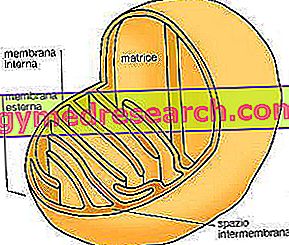Consistency always pays off
It is a known fact that both power and endurance training produces adaptations in our body; this principle is known as supercompensation. Very simply in response to increasing stimuli (principle of progressiveness of loads) the man machine implements strategies that modify the current balance to prepare to face a greater future stress in the best possible way.
It does not seem to me until now that I have said anything new. Now I ask you a question: what systems does supercompensation involve?
- Obviously the musculoskeletal system. Much has been said and written on this subject, which seems to me trivial to talk about again.
- The functional system certainly cannot escape us practitioners of indoor cycling - cardiovascular and respiratory -.
- And then?
And then there's the metabolic-enzymatic system.
I want to clarify that none of these three aspects can be considered separate from the others. Adaptations induced by training go hand in hand for all three systems considered. The greatest effects on the functional system and on the metabolic-enzymatic one are induced by endurance training.
That's why I decided to spend a few words on this apparatus. So let's see how it works and how it fits.
I would like it to be first of all clear that the energy mechanisms all have the same purpose: to reconstitute the molecules of ATP (adenosine triphosphate), which represent the reserves of readily available energy, starting from ADP (adenosindifosfato). The few things I will say are essentially about the aerobic energy mechanism. In this case the process of ATP resynthesis takes place within the mitochondria. These are organelles present in the cells within which chemical reactions take place that allow the process just described in the presence of oxygen. Simplifying to the utmost we can say that they contain the enzymes necessary to transform food into energy, which is then stored in ATP molecules and made available. The mitochondria has a very permeable external membrane that lets pass almost all the molecules present in the cytosol; on the contrary the inner membrane is much less permeable, in fact only molecules that will be metabolized by the innermost space containing the matrix pass through transport proteins (carrier). Once inside (intentionally omitting all the chemical steps) each of these molecules, in the presence of oxygen, will be able to produce 36 moles of ATP. The same molecule in the cytosol, then outside the mitochondria, will produce only 2 moles of ATP! It is thus clear how much more effective the mechanism of resynthesis in the presence of oxygen, rather than the anaerobic one.

Scheme of a mitochondria
We've seen how it's done so far. Let's deal with how it fits:
The best thing is that the mitochondria can increase up to double inside the same cell. Also carrier enzymes improve by speeding up the transport of molecules that will be used for energy purposes in the matrix.
In practice it is as if the number of "burners" increased and in addition each of them could burn more fuel. This means that the more we train consistently and the more we will be able to use the fuel available for our performances, which may be longer and even more intense. Should I remember that the elective fuel for us indoor cycling practitioners is a mixture of sugars and FATS ?
 |  Personal trainer, Schwinn Cycling instructor, postural gymnastics, yogafit and Mountain bike |



